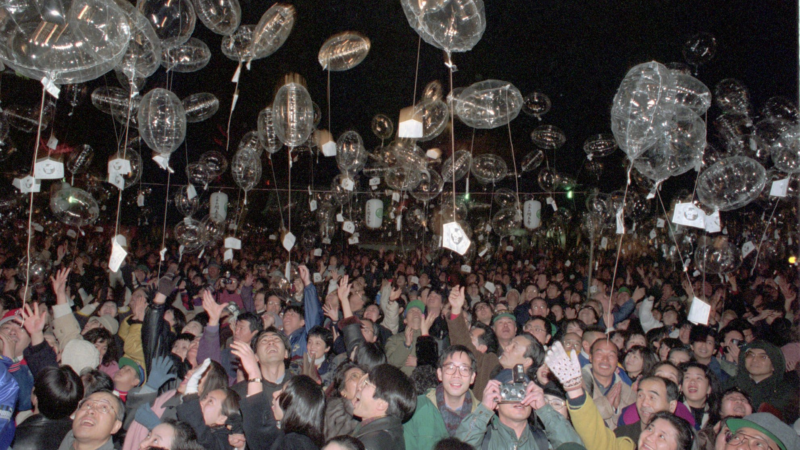Ancient Roman masterpieces emerge from a London demolition pit
LONDON — A remarkable archaeological endeavor in the heart of the British capital has brought to light one of the most extensive collections of painted Roman wall plaster ever unearthed in the city.
Thousands of vibrant fragments, which once adorned a high-status Roman building, offer an unprecedented glimpse into the artistic sophistication and daily life of ancient Londinium, and their rearrangement is showcasing artworks that have remained hidden for over 1,800 years.
The discovery, made at “The Liberty” development site in the city’s Southwark neighborhood, builds upon previous significant finds in the area, including intricate mosaics and a rare Roman mausoleum.
The sheer volume of the plaster fragments, however, was not immediately apparent to archaeologists.
The material was found discarded in a sizable pit, shattered as a consequence of Roman-era demolition activities that occurred before A.D. 200.
The painstaking process of reassembling these fragments has been a monumental undertaking, experts say, akin to solving an immense historical puzzle.
Leading this intricate reconstruction effort was the Museum of London Archaeology (MOLA) where Han Li, the senior building material specialist, spent three months meticulously laying out and piecing together the fragments.
The result is a stunning restoration that allows these ancient frescoes to be viewed in their original splendor for the first time in nearly two millennia.
“This has been a ‘once in a lifetime’ moment, so I felt a mix of excitement and nervousness when I started to lay the plaster out,” Li said in a MOLA press release.

“Many of the fragments were very delicate and pieces from different walls had been jumbled together when the building was demolished,” well before the Romans had abandoned Britain as their empire began to recede, he said. “The result was seeing wall paintings that even individuals of the late Roman period in London would not have seen.”
The recovered artworks depict bright yellow panel designs interspersed with black sections, exquisitely decorated with motifs of birds, fruit, flowers and lyres.
Such panel designs were a common feature in Roman wall decoration, according to MOLA, but the prevalence of yellow panels was unusual. Similar designs have been identified at only a handful of sites across Britain, including the opulent Fishbourne Roman Palace, about 60 miles to the southwest of this site.
Beyond their aesthetic appeal, the fragments offer unique insights into Roman artistry and literacy. Among the more than 120 boxes of painted plaster, archaeologists uncovered what appears to be the first known example of a painter’s signature in Roman Britain.
![Framed by a tabula ansata — a decorative tablet that's typically used to sign artworks — an inscription includes the Latin word 'FECIT,' meaning 'has made [this].'](https://npr.brightspotcdn.com/dims3/default/strip/false/crop/7050x3711+0+0/resize/1200/quality/75/format/png/?url=http%3A%2F%2Fnpr-brightspot.s3.amazonaws.com%2F48%2Fda%2Fc64b9abd4d43aa026d36734e3cce%2Fthe-remains-of-the-tabula-ansata-mola-museum-of-london-archaeology.jpg)
Framed by a tabula ansata — a decorative tablet that’s typically used to sign artworks — the inscription includes the Latin word ‘FECIT,’ meaning “has made [this].” But the section bearing the artist’s name is missing, leaving their identity a mystery.
Further intriguing details include ancient graffiti left by the building’s occupants or visitors. One fragment features a nearly complete ancient Greek alphabet, the only known instance of such an inscription from Roman Britain.
The precise scoring of the letters suggests a skilled hand, indicating it was not merely writing practice but possibly served a practical purpose, such as a checklist or reference. Another piece reveals the face of a weeping woman, depicted with a hairstyle characteristic of the Flavian period, which dated from A.D. 69-96.
The artistic influences evident in these frescoes extend beyond Britain, drawing inspiration from wall decorations found in other parts of the Roman Empire, such as Xanten and Cologne in Germany, and Lyon in France. Some fragments even mimic high-status wall tiles, such as red Egyptian porphyry and African giallo antico marble, styles also seen in Londinium north of the River Thames, the southern English town of Colchester, and Pompeii in Italy.
London was originally founded as a city — Londinium — soon after the Roman invasion in A.D. 43, and has consistently yielded significant archaeological treasures. In recent years, numerous excavations have unearthed remnants of Roman roads, buildings and artifacts, continuously reshaping historians’ understanding of this ancient metropolis.
The sheer scale and detail of the Southwark plaster collection provide an unparalleled opportunity, according to MOLA, to study Roman domestic art and the lives of its inhabitants.
Research into each plaster piece is ongoing, with Han Li and his MOLA colleagues continuing to analyze the work of these ancient painters. Their efforts will involve comparing the Liberty wall paintings with other examples from Britain and the broader Roman world.
The findings will be published, and the fragments archived for future academic study, with plans for eventual public display, allowing contemporary audiences to witness these extraordinary artistic legacies from a bygone era.
Out with the mayo: How Ukrainians reclaim holiday food
For many people from former Soviet countries, New Year's is a big holiday feast time. A Ukrainian restaurant in Washington gives NPR a taste of what's on the menu.
His brother’s mental illness isolated his family. Now he’s helping other caregivers
When it comes to serious mental illness, family caregivers are crucial partners. But often, they must fend for themselves. A new solution offers them support.
Farmers are about to pay a lot more for health insurance
Tariffs, inflation, and other federal policies have battered U.S. farmers' bottom lines. Now many farmers say the expiration of federal health care subsidies will make their coverage unaffordable.
50 wonderful things from 2025
Each year, critic Linda Holmes looks back on the year and compiles a list of the things that brought her joy.
Why do we make New Year’s resolutions? A brief history of a long tradition
One of the earliest mentions of New Year's resolutions appeared in a Boston newspaper in 1813. But the practice itself can be traced back to the Babylonians.
Judge orders new trial for Alabama woman sentenced to 18 years in prison after stillbirth
Lee County Circuit Judge Jeffrey Tickal vacated Brooke Shoemaker’s 2020 conviction for chemical endangerment of a child resulting in death. Tickal said Shoemaker's attorneys presented credible new evidence that the infection caused the stillbirth.








